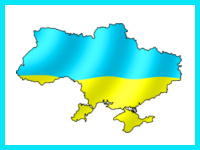









|
| Welcome, Guest · RSS |
2025-12-16, 3:12 PM |
Main » 2012 » December » 07
The majority of the GCC population consists of expatriates (see Markaz Report 2012). Based on 2010 data, Credit Suisse has reported Qatar as having
86.5% expatriates, the highest percentage of international migrants in the
world. This is followed by 70% and 68.8% in Kuwait and the
UAE, respectively. Country
| Expatriates, %
| Qatar
| 86,5
| United Arab Emirates
| 70,0
| Kuwait
| 68,8
| Bahrain
| 39,1
| Oman
| 28,4
| Saudi Arabia
| 27,8
|
|

Envisat captures sand and dus t blowing northeast from the
Arabian Peninsula across the Persian Gulf toward Iran (visible at image top). This
image has acquired on 1 July 2008 by Envisat’s Medium Resolution Imaging
Spectrometer (ESA Photo). t blowing northeast from the
Arabian Peninsula across the Persian Gulf toward Iran (visible at image top). This
image has acquired on 1 July 2008 by Envisat’s Medium Resolution Imaging
Spectrometer (ESA Photo).
|

This Envisat image, acquired on 28 October 2011, shows central Saudi Arabia on
the arid Arabian Peninsula. The area pictured is on the central plateau, Nejd,
which slopes downwards from west to east. The dark circle near the centre of
the image is the capital city of Riyadh (ESA
Photo). |
The GCC countries have relatively low population in comparison with other regions, totaling 45 m people in 2011, less than 1% of the global population (see table). Accordung to the Markaz research GCC Demographic Shift 2012, the region is young with 54% under the age of 25, though this is expected to rise to about 36 by 2050.
|
Country
|
Population 2011
millions
|
Population 2050
millions
|
|
Bahrain
|
1,3
|
2,0
|
|
Kuwait
|
2,8
|
5,2
|
|
Oman
|
3,0
|
5,3
|
|
Qatar
|
1,7
|
2,4
|
|
Saudi Arabia
|
27,9
|
44,6
|
|
United Arab Emirates
|
7,9
|
12,2
|
|
GCC Total
|
44,6
|
71,7
|
For comparison, Ukraine population is 45,7 m in 2011 (according to Trading Economics), with the significant decline and aging by 2050.
 |
|
|












